Sustainable living weekend
The Big Weekend of Sustainable Living Ideas
On Saturday, Lil Sis and I went to Sustainable Living Tasmania’s Big Weekend of Sustainable Living Ideas, which was held across two venues in Bridgewater. SLT put on free buses from the city to Bridgewater so it was no trouble at all for me to get out there.
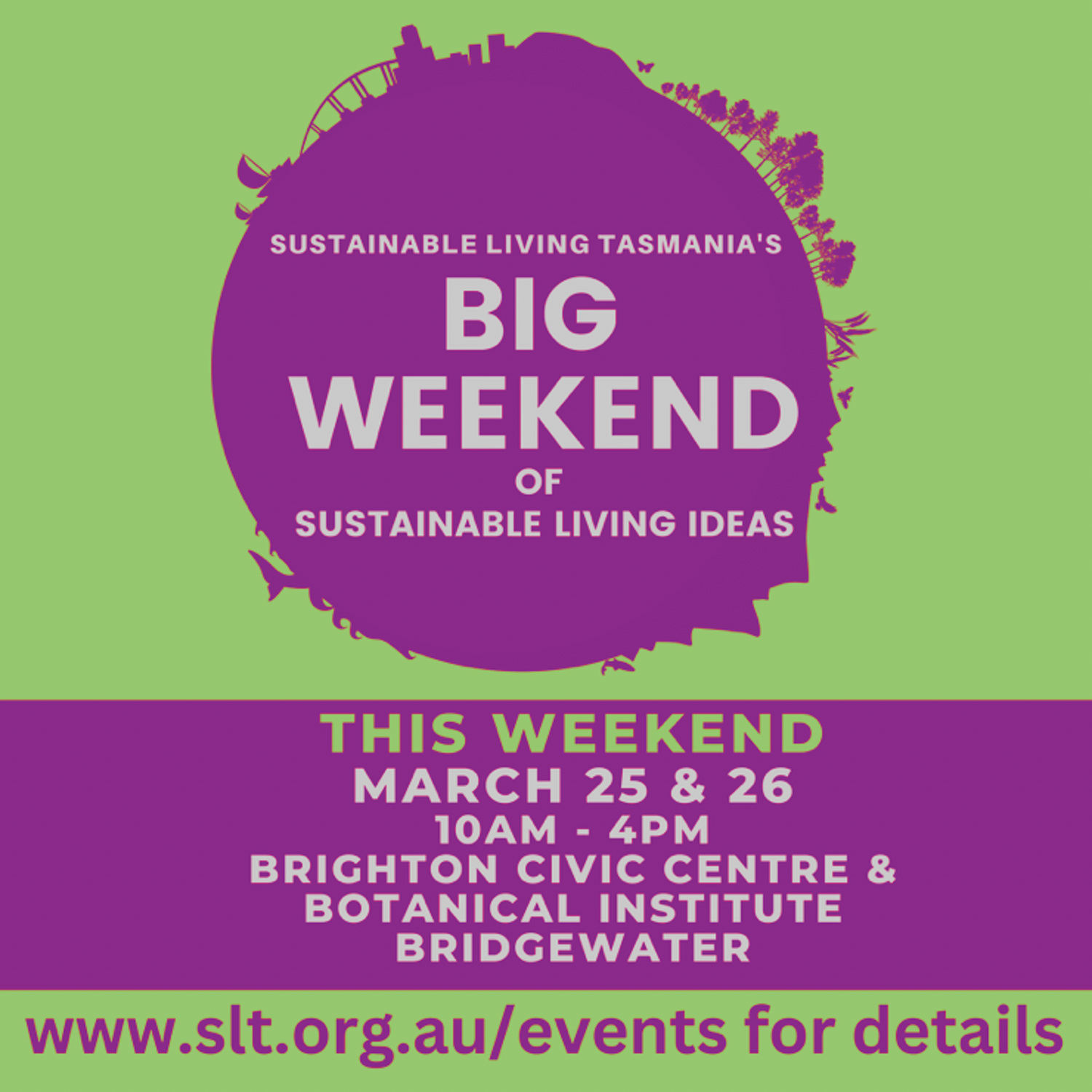
The venues stand on the land of the mumirimina people, one of the bands of the Oyster Bay Tribe.
The weekend aimed to
connect community members, businesses and organisations with projects, initiatives, processes and education pathways to encourage households and businesses to adopt sustainable practices. Exhibitors, stall holders, speakers, community groups, chefs, entertainers, artists and sustainability enthusiasts will all converge on the venues to stimulate ideas and conversations aimed at empowering the community to move towards a more sustainable way of living.
Brighton Civic Centre exhibits
We started out in the Brighton Civic Centre, with a very moving Welcome to Country, which spoke to the importance of Country to Aboriginal people and how it is so important to see people and Country as One, not as separate things.
We browsed through the stalls before it got too busy.
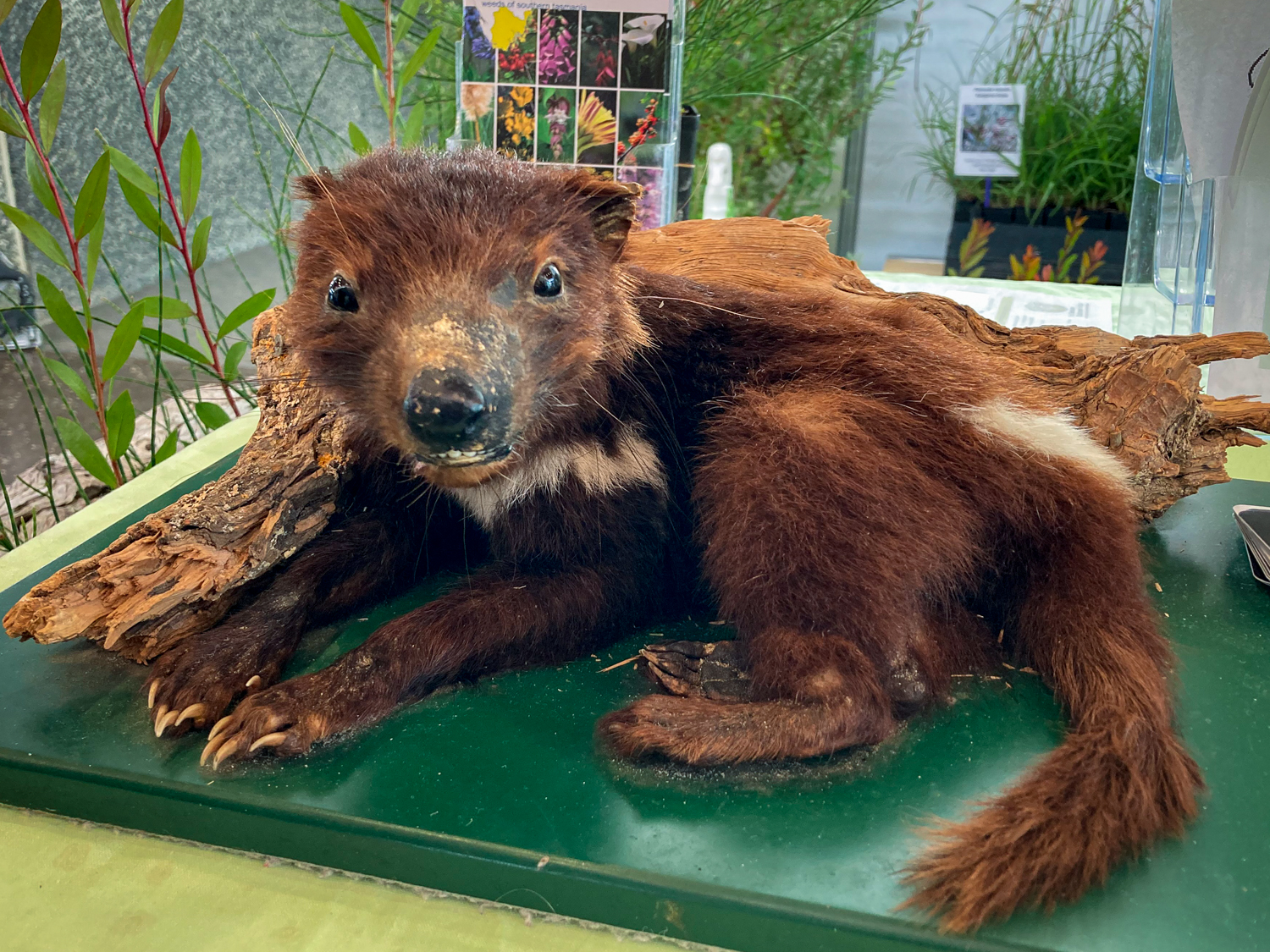
We learned about energy efficient homes, natural funerals, the work of the Resource cooperative at the South Hobart Tip Shop, and how to line a FOGO bin with newspaper. We saw some of the amazing things that people sent to the tip, including a Law of Nature and Nations book from 1675!
The Botanical
The second venue, the Botanical, is a short walk from the Civic Centre. It’s one of two 24 Carrot Gardens and is connected to MONA in some way I’m not entirely sure of!
We were booked into a bush tucker workshop at 12.30 so we had time to browse the outdoor stalls and hear some of the other presentations. One thing that caught my eye was the “Port a Patch” garden, which is a kind of giant box with a lid that is fully no-dig, supports worms and bugs with kitchen scraps, and doesn’t need weeding.

Colour me interested!
We also chatted to people at Landcare and nipaluna nursery, and heard from Bill Harvey from Hobart Council, who spoke about the bio kiln system and the potential for doing this on a large scale to process green waste that the council collects.

I was especially looking forward to hearing Julie from the Southern Tasmania Poultry Club talking about backyard chickens. I learned a couple of handy tips for my chickens, including that you can crush up eggshells from cooked eggs (like boiled eggs) and feed them to the chickens but not to give them raw eggshells. I also learned that lice, mites and worms are the most common parasites and how to check for these.
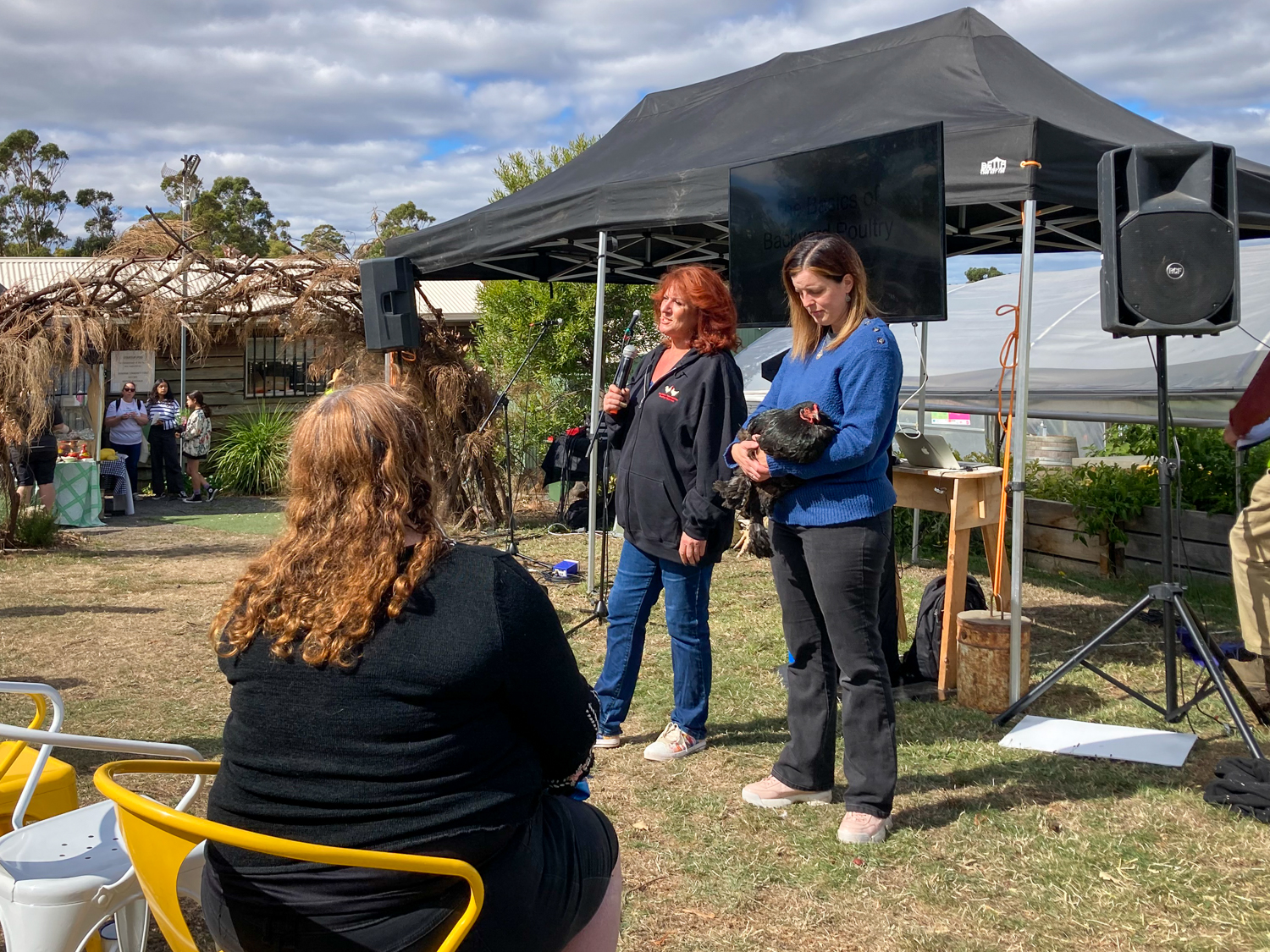
The chicken club had some lovely birds with them including a beautiful young Indian Game, a black Brahma (called Michelle Obrahma) and two very pretty pure white Wyandottes. I gather the Indian Game chickens are primarily raised as (to put it delicately) “table” birds but they are fair layers as well.

Palawa kipli
The main thing we were there for was the bush tucker workshop with Kitana Mansell from Palawa Kipli.
palawa means Tasmanian Aboriginal person and kipli means food in palawa kani. palawa kani is the Tasmanian Aboriginal language that has been reconstructed over many years from what remained of the original languages that were wiped out as a result of colonisation.
We were supposed to be seated in the poly tunnel but it was incredibly hot. Great for the plants, not so great for heat-averse humans like me, so we moved outside to sit under some trees.
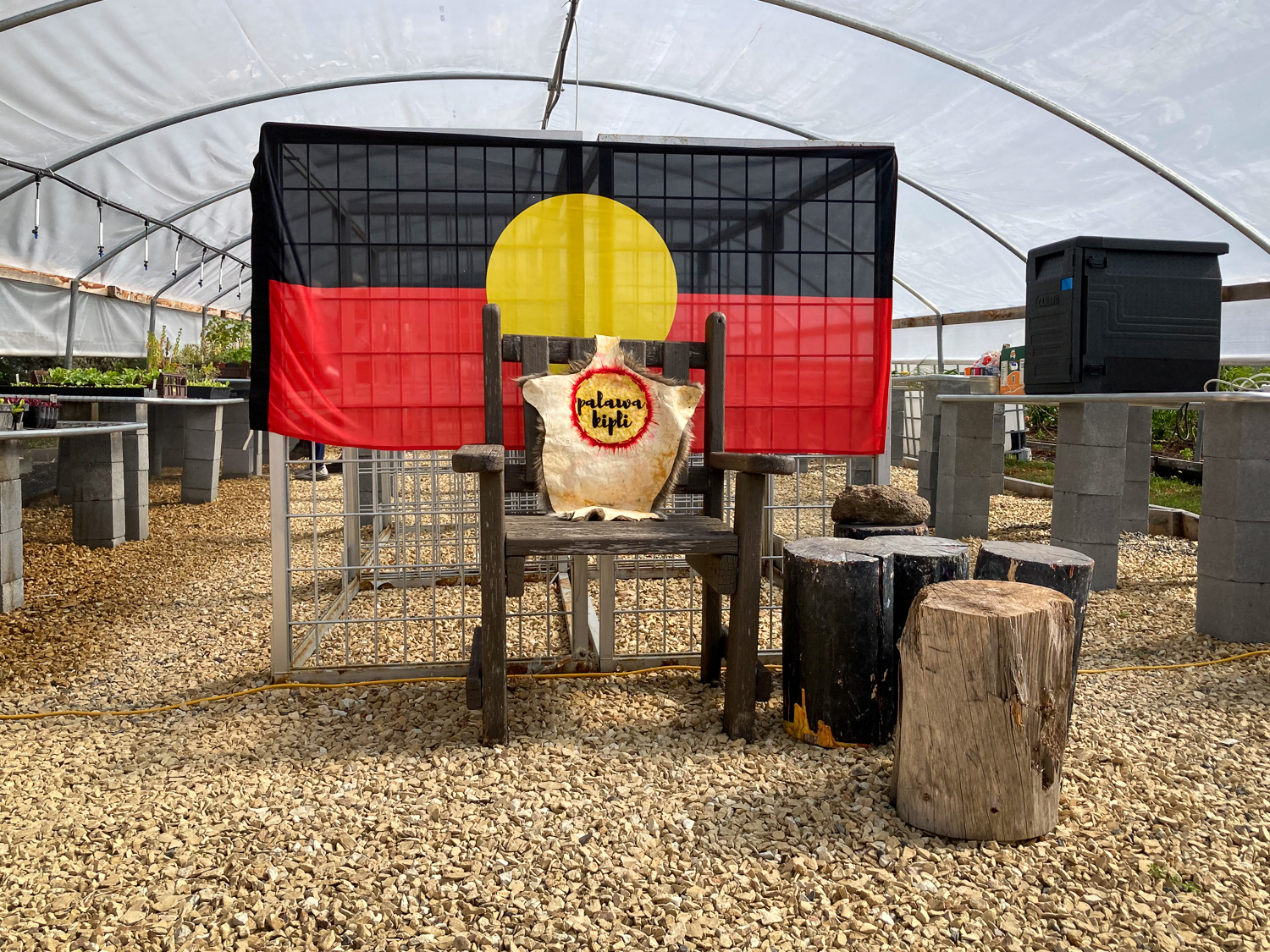
Kitana is the manager of Palawa Kipli, an Aboriginal-owned business that offers bush food catering and Aboriginal cultural experiences at piyura kitina/Risdon Cove.
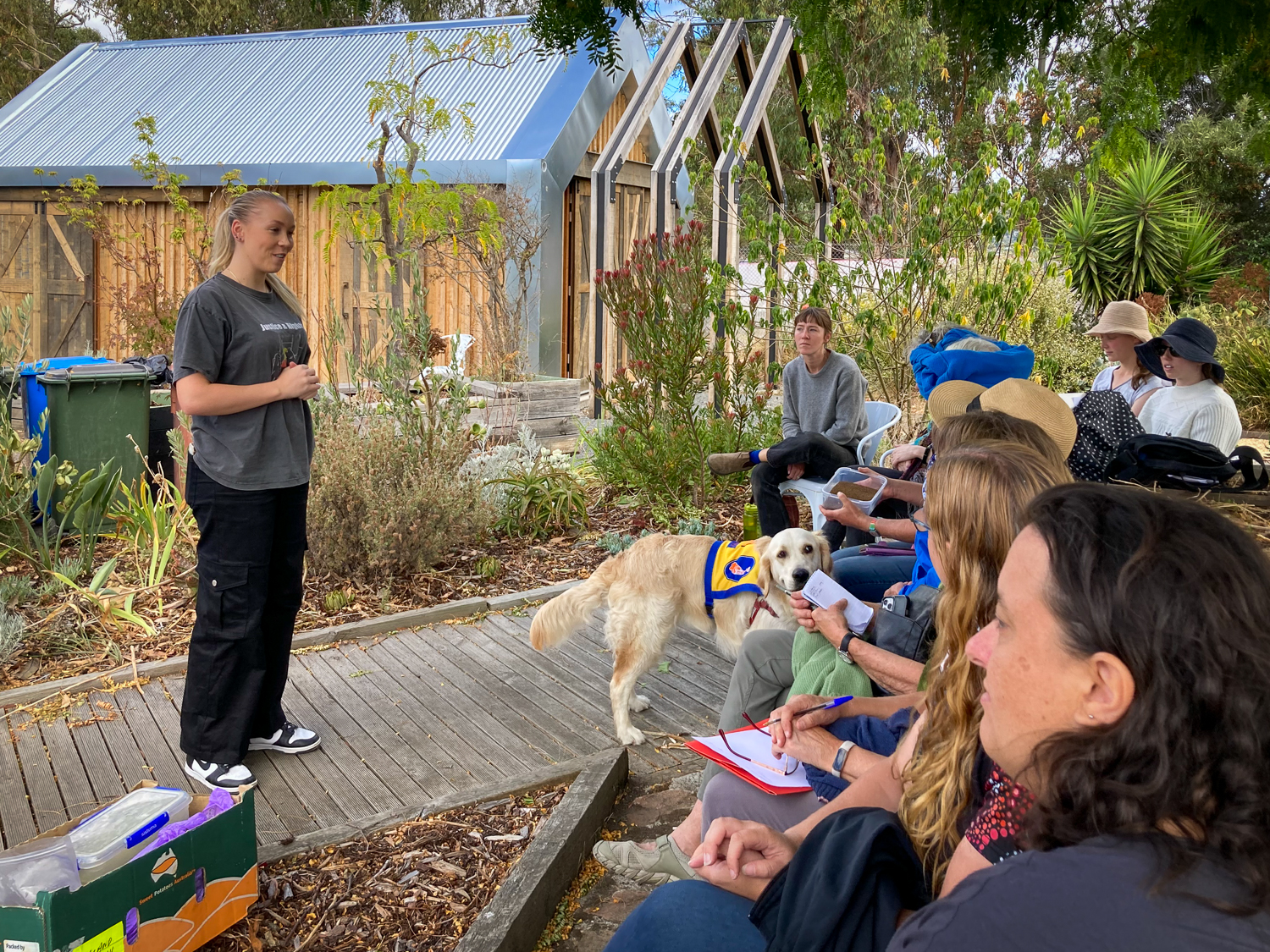
She started by sharing some of her story and of how she came to develop her passion for the bush food of lutruwita/Tasmania. The more she learned, the more she realised how much knowledge of the plants and their traditional uses had been lost through colonisation and she felt it was important to not only revive this knowledge for Tasmanian Aboriginal people, but to share this with the wider community, so that non-Aboriginal people can start to understand more about what is the oldest living culture in the world.
Palawa kipli aims to ensure that the Tasmanian Aboriginal community leads and benefits from this work, and its profits go back to the Aboriginal community.
Kitana talked us through some of the commonly used plants, their names and what they can be used for. This included wattleseed, she oak, kunzea, saltbush and pig face, the palawa kani name of which is kunnikung. It’s one of the few words of any of the orignal languages that survived.
There’s a new edition of Rees Campbell’s wonderful book, Eat More Wild Tasmanian, which references the palawa kani words for more than 50 plants.
Finally, we got to sample some of Palwa Kipli’s produce including kunzea relish, kunzea olives, pepperberry guacamole (which was the absolute best!), wattleseed brie, and pepperberry pickled onions. To drink was leatherwood honey soda and lemon myrtle iced tea.
It was all so good!
Next stop for us will be the kipli takara tour.
Kitana is also featured in the April issue of Gardening Australia magazine which is very cool!
There was a lot from the weekend that we didn’t see but what we did get to experience was fabulous! Thanks to SLT for putting it together (and happy 50th birthday).